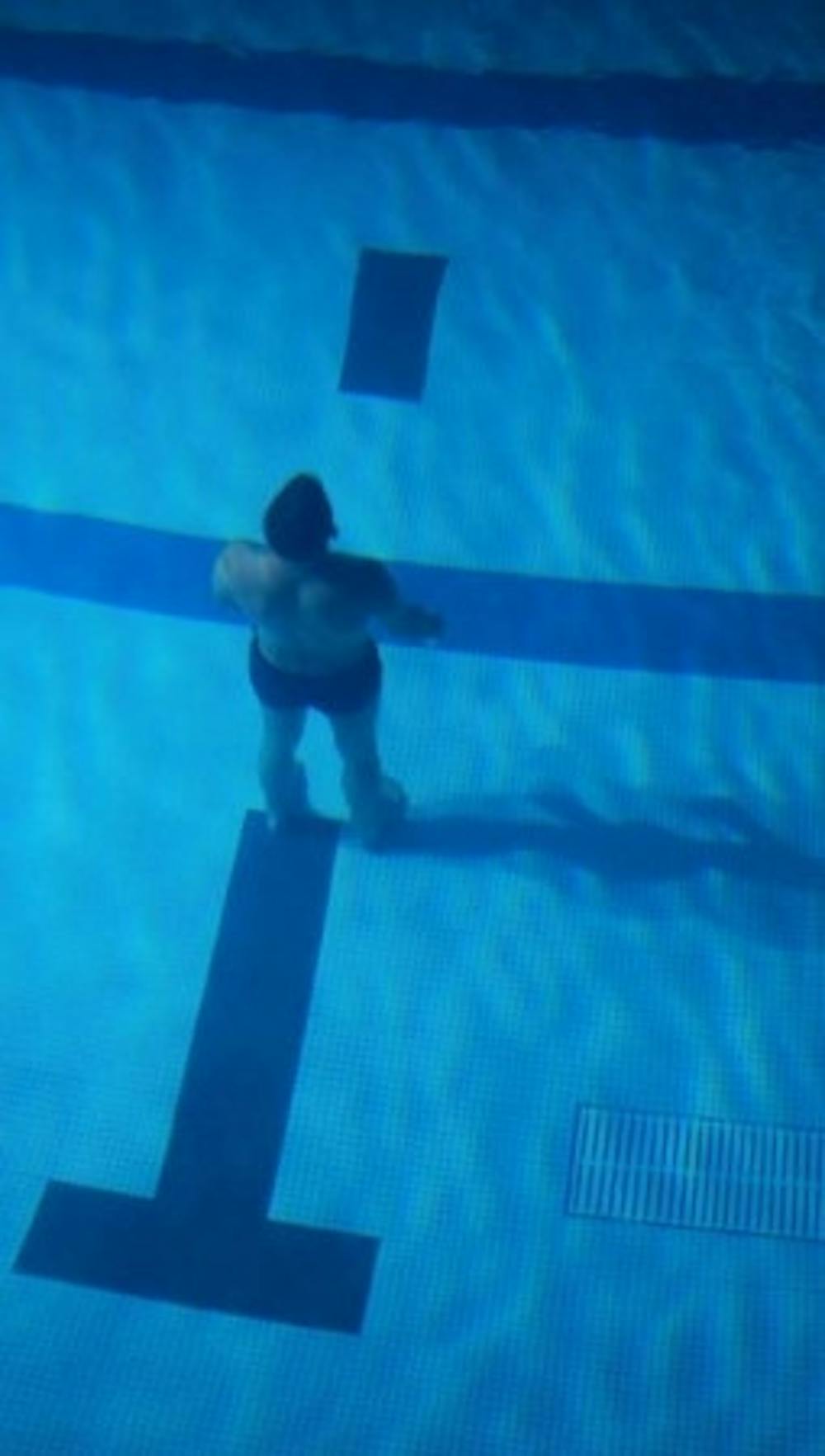On Saturday, April 29 and Sunday, April 30, the Middlebury College Department of Theatre and Dance, along with the Department of Music, the Johnson Visual Arts Residency Performance Fund and the Natatorium, co-hosted “Breathe,” an underwater opera and dance event that aimed to connect with the audience through sound, sight and movement.
The interactive and awe-inspiring piece is the brainchild of Artist in Residence Gabriel Forestieri, composer Loren Kiyoshi Dempster and writer and visual artist Adrian Jevicki. The performers included Middlebury students of dance and music.
The performance began with two men dressed in tuxedos in the pool, one holding his breath at the bottom and one playing a string instrument that was fully submerged underwater. The echoing sound from the instrument vibrated through the water, was caught by an underwater microphone and resonated throughout the Natatorium. The music produced a calming yet eerie effect when combined with the voice overlay which discussed the question of one’s place in the universe.
The two men then began to float on top of the water, one moving the other around as if to help him come back to reality. Observing this human connection in the inhumane world of the water, the audience saw two interlocked bodies as a representative of the depth of our relationships.
While these actions transpired in the pool, performers walked around the water’s edge almost in a trance, following each other and singing dream-like tunes that reverberated around the area due to the acoustics of the Natatorium. The sensory image of the dazed performers combined with their soothing and pensive lyrics created a sense that the audience was viewing someone’s consciousness and memories.
“Breathe” was not solely pensive and tranquil, however. At one point the audience walked down from the bleachers and to the edge of the pool in order to view two dancers and a percussionist perform in a flurry of movement and lively sounds. Using the bleachers as a platform for a form of tap dance and drumming, the performers fed off of each other’s energies to create an intense sense of passion and expression. This portion was all improvisation, demonstrating the importance of the performers being present and connected to one another in that moment of high intensity collaboration.
The voice overlay sought to connect the audience’s experiences with the events that were transpiring. At one point the audience was encouraged to think about their first memories with coloring books and ask themselves if this was an apt form of creative expression, or if it fostered a sense of controlled actions. Bringing the audience back to their own thoughts allowed for the piece to be about more than the simple but mesmerizing movements in the novel environment of the water. It was also about the way that we can interpret our current environment in order to reflect on our past.
One of the standout moments of the performance was when a seemingly professional diver confidently dove from a diving board into the water with little hesitation. Clad in a tuxedo, this amazing athlete performed descents of increasing skill and complication into the pool that seemed to belong at the Olympics. The combination of this impressive athleticism with the sounds of classical music was a sensory experience that could not be found anywhere else.
Continuing with the theme of intertwining impressive athletic ability and music, the performance also featured a kayaker frequently submerging himself and coming up for air in a circular dance-like motion. This complicated rotating sequence paired with the entrancing dances of the students and the reflective music of the singers and instruments was stunning.
The audience was encouraged by performers to move around the space and observe the actions surrounding them from different angles and perspectives. There were floating docks going across the pool that allowed the audience to engage with the water itself and feel the waves due to the motions of the performers.
One of the student performers, Madeline Ciocci ’20, hoped that audiences were able to “see the beauty in the fairly simple movement that was done in the piece” as “sometimes the more simple something is, the more meaning and value it can hold.”
Because the intended message of the performance was not always clear, “Breathe” gave agency to the audience to experience and understand the piece through their own interpretation. There was no explanation of the performance given in the program, nor was there a speech at the end of the piece to shed light on the inspiration behind the work. This is a refreshing take on performance art, as it allows for the audience to make the piece about themselves and their own thoughts, instead of those of the creator.
One of the many reasons we attend performances is to get lost in the work and move outside of our own perspective. When watching “Breathe,” the audience was encouraged not to escape, but to engage with their thoughts and find their own meaning for their new surroundings.




